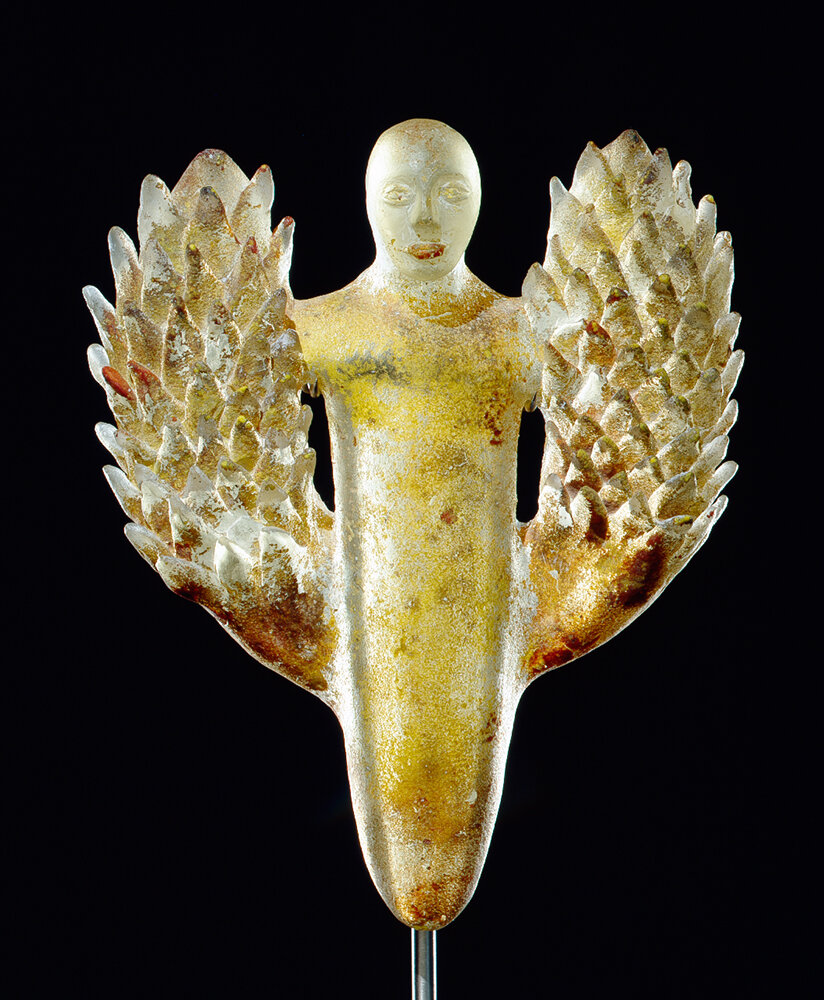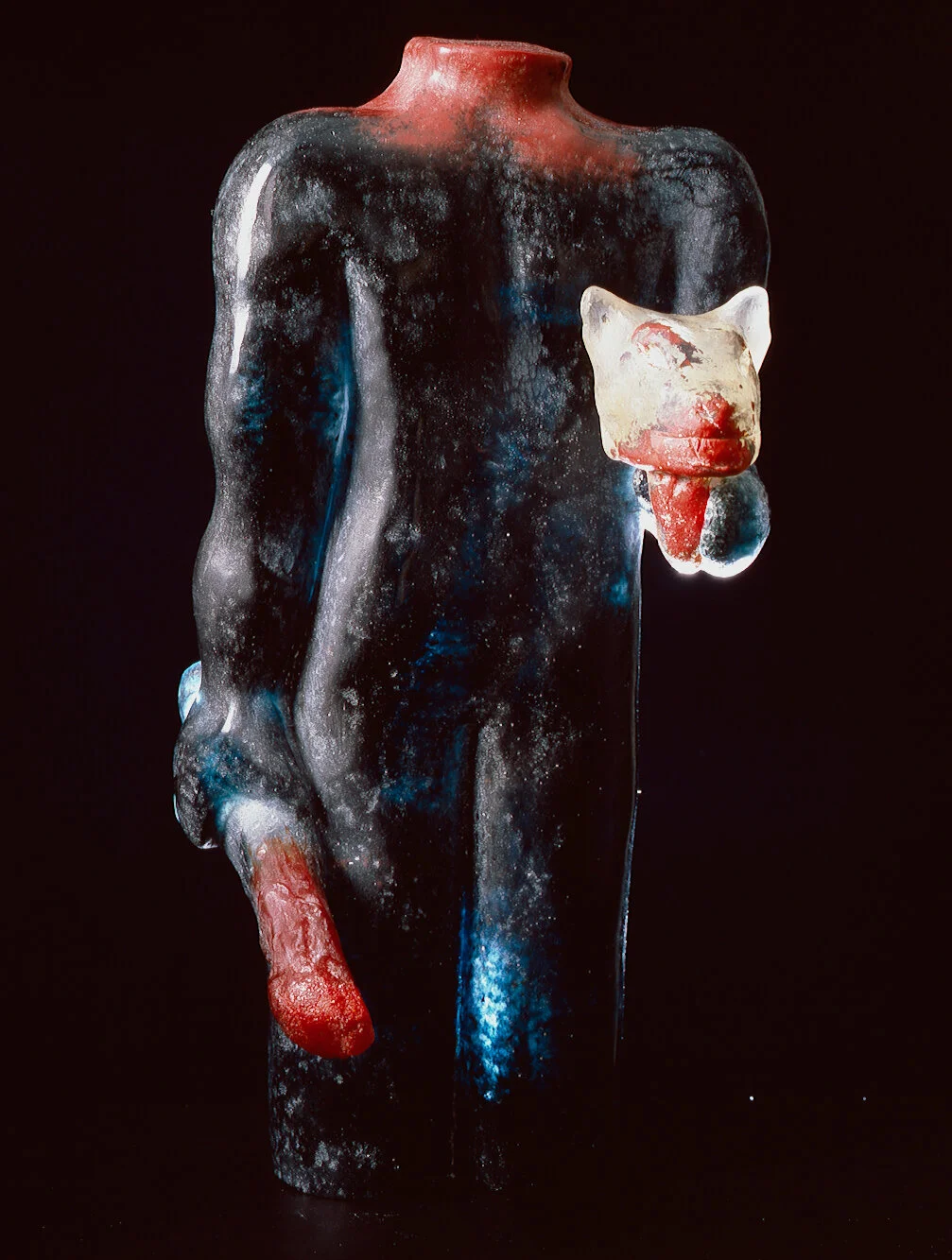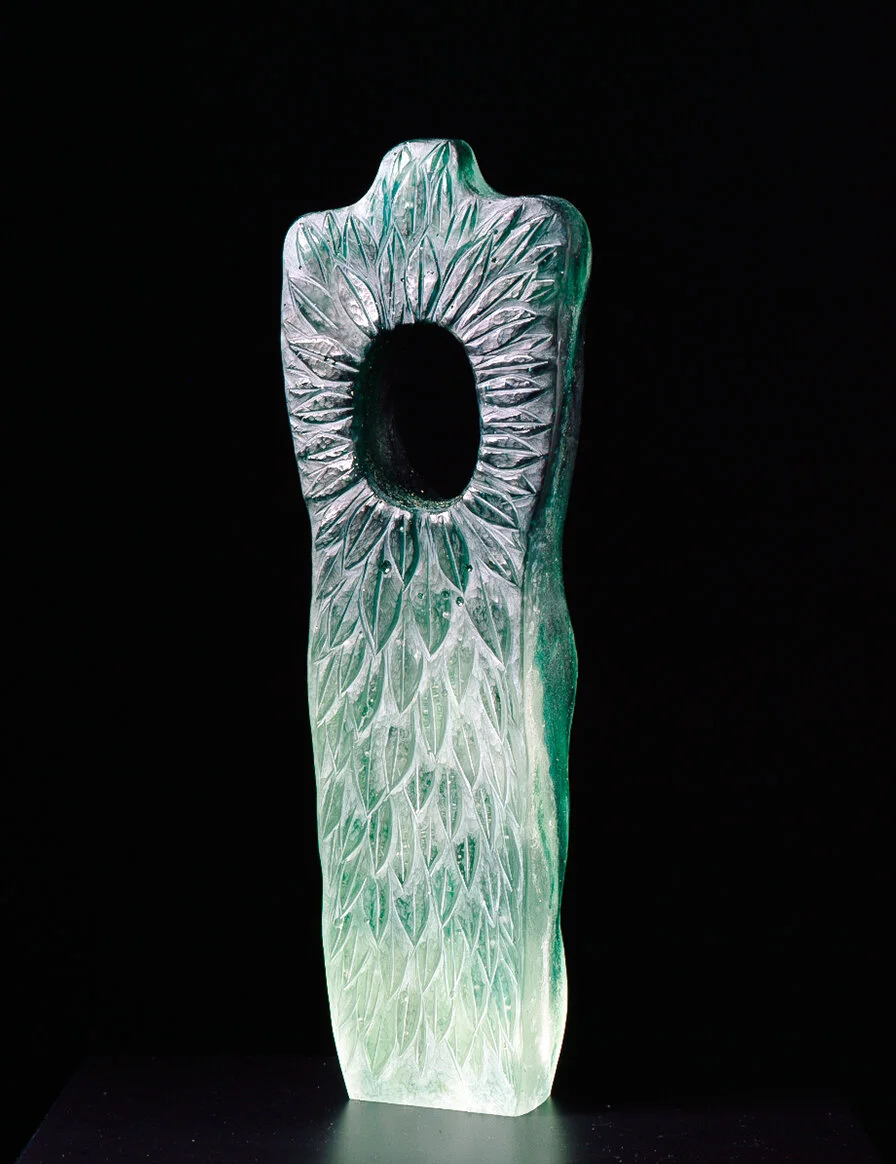
"De Obaldia captures the ritual essence of one of the oldest and most appealing of materials and transfers its essential qualities of translucency, fragility and preciousness into what appears to be monumental objects, but are actually quite intimate and small in nature.
Color adds an expressive element to her work and transforms the quiet simplicity of the shapes into vital entities.The natural flaws of the glass, as well as the distortions that appear after firing, become aesthetic elements to enhance traditional references to antiquity, especially those reminiscent of Egyptian, Near Eastern or Roman artifacts. She employs this variety of technique to activate the glass and bring it to life with a new sense of energy and content that transcends ancient or primitive references to become absolutely contemporary in context."
- Carol Damian, 2000
Nazareno 1999
"De Obaldia effectively uses subtle streaks of color to deliver emotional charge. The touches of blood red that highlight the facial features in Nazareno, for instance, seem to indicate the passion of a martyred figure."
- David Ebony, Captive Spirits, New York, Mary-Anne Martin/ Fine Art, 1999
"Given the fragility of glass and the uncertainties of the process, in which the sculpture breaks readily, De Obaldia's ability to conceive an evocatively sculpted figure in itself merits notice.
Tiger, was an exhibition highlight. A man with muscular arms clutches his rust-colored face to his chest, his body cast in pale white translucent glass marked by rivulets of amber. His stocky legs are incised with flowing lines reflecting the glass's fluidity. His face bears primitively etched, hollow eyes, a broad nose, and pointed teeth, like a demonic mask. De Obaldia sculpts glass into figures at once seductive and startling"
"- Mary Schneider Enriquez, Beasts and Men, New York, Mary-Anne Martin/ Fine Art, 1997









